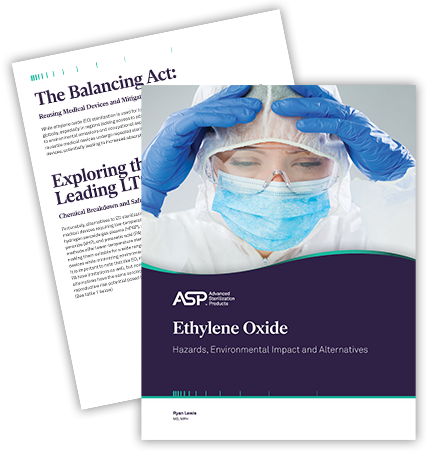Discover the Critical Insights on EO Sterilization and Safer Alternatives
Ethylene oxide (EO) is a widely used sterilization method for both commercial and healthcare applications. Approximately half of all single-use medical devices are sterilized using EO in large-scale facilities before reaching patients.1 However, the rising concern over EO's toxic emissions has prompted stricter regulations and legal actions due to the health risks posed to workers and nearby communities.2,3,4
Key Concerns of EO Sterilization
- Health Risks: Exposure to EO increases the risk of cancer and reproductive issues5,6
- Environmental Impact: EO emissions contribute significantly to air pollution7,8
- Patient Safety: Residual EO on devices after sterilization poses potential health risks9
- Operational Inefficiency: Lengthy aeration times required after EO sterilization slow down processes
EPA's Regulatory Actions
The U.S. Environmental Protection Agency (EPA) has implemented a two-pronged approach to tackle EO exposure:10
- Stricter emissions limits for sterilization facilities
- Enhanced protections for workers and residents near EO manufacturing plants
A Paradigm Shift Toward Safer Sterilization Methods

Hydrogen Peroxide Gas Plasma (HPGP) presents a promising alternative to EO, notably in these areas:
- Safety: HPGP breaks down into harmless water vapor and oxygen, posing no health or environmental risks.11
- Efficiency: Shorter sterilization cycle times improve operational efficiency.12,13
- Effectiveness: HPGP is versatile and effective in sterilizing a wide range of medical devices.13




